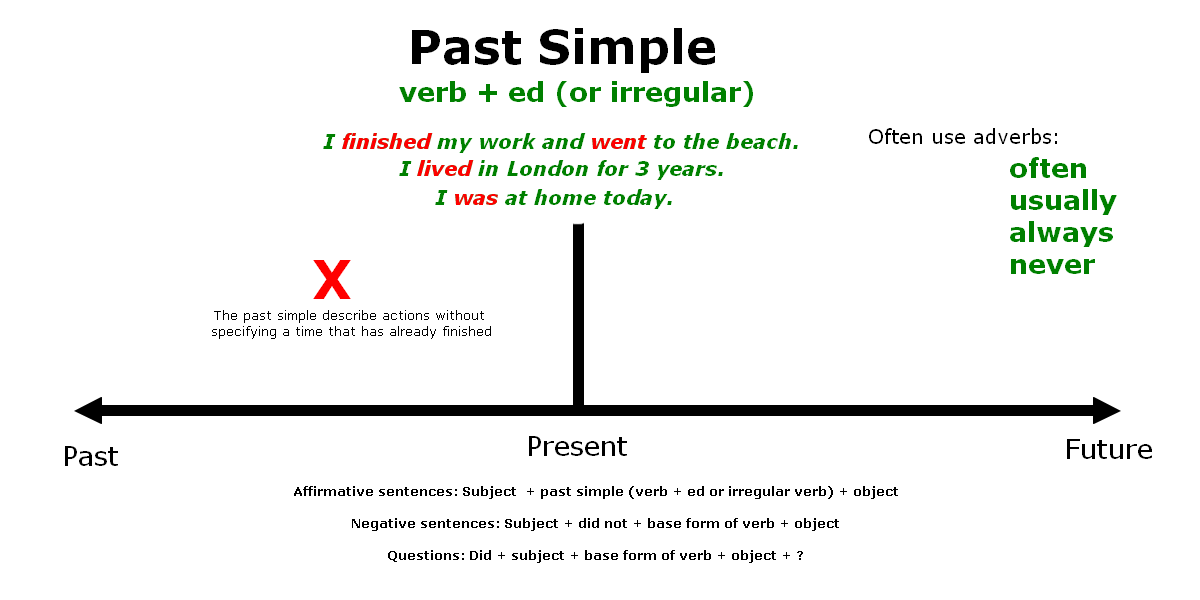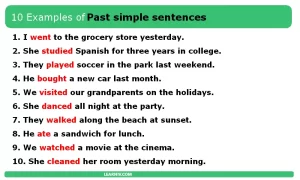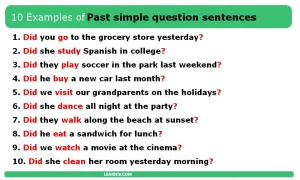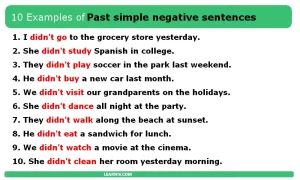
The past continuous and the past simple are two different tenses used in English to describe actions that happened in the past. Here are the key differences between them:
Past Simple
- Usage: The past simple tense is used to describe completed actions or events that happened at a specific point in the past.
- Form: The past simple is formed by adding the past tense marker (-ed) to regular verbs, and using the irregular verb forms for irregular verbs. For example: “I played soccer yesterday.”
- Duration: It does not indicate the duration or the ongoing nature of the action. It simply states that the action occurred and is completed.
- Signal Words: Signal words often used with the past simple include “yesterday,” “last week,” “in 1990,” and other specific time expressions that pinpoint when the action took place.
Past Continuous
- Usage: The past continuous tense is used to describe actions that were ongoing or in progress at a specific moment in the past. It emphasizes the duration and temporary nature of the action.
- Form: The past continuous is formed by using the past tense of the verb “to be” (was/were) and adding the present participle (verb + -ing). For example: “I was playing soccer at 3 PM yesterday.”
- Duration: It emphasizes the duration of the action and the fact that it was happening for a period of time in the past.
- Signal Words: Signal words often used with the past continuous include “while,” “when,” “at this time,” “all day,” and other time expressions that show the action was ongoing at a particular point in time.
Example:
- Past Simple: “I watched a movie yesterday.” (The action of watching a movie is viewed as a completed event in the past.)
- Past Continuous: “I was watching a movie when the phone rang.” (The action of watching a movie was ongoing when the phone rang, indicating an interrupted action.)
In summary, the past simple is used to describe completed actions in the past, while the past continuous is used to describe actions that were ongoing or in progress at a specific moment in the past, emphasizing their duration and temporary nature.
Compare sentences in past continuous and past simple tense
| Pat continuous | Past simple |
|---|---|
| I was eating dinner. | I ate dinner. |
| She was visiting London. | She visited London. |
| They were studying for the exam. | They studied for the exam. |
| We were seeing that movie before. | We saw that movie before. |
| He was writing a book. | He wrote a book. |
| The team was winning the championship. | The team won the championship. |
| I was living in this city for five years. | I lived in this city for five years. |
| She was learning to play the guitar. | She learned to play the guitar. |
| They were finishing their project. | They finished their project. |
| We were knowing each other since childhood. | We knew each other since childhood. |
Past simple tense
The past simple tense (sometimes called preterite, simple past or past indefinite) is the basic form of the past tense. This is one of the most common past tenses and can describe a lot of events. It is really important to know how and when to use this tense for daily conversation.
The term „simple“ is used because it distinguishes syntactic sentences from the auxiliary of the past perfect or past progressive tense. The past simple is one of the easiest tenses to learn, which is one reason why this tense is called the past simple tense.
Look at past simple tense examples
More examples of Past Simple sentences
Other examples:
Past Continuous

The past continuous tense is used to describe actions that began in the past and often continued for a short period of time after the action started.
The past continuous (sometimes past progressive) tense is a really important tense used in English. This tense is very often used in daily conversation so it is really necessary to know how to use it.
The past continuous also combines the progressive aspect with the past tense using the past tense form of the irregular verb „to be“ in combination with the verb in base form + the suffix –ing (present participle).
Look at past continuous tense examples.
More examples of Past continuous sentences
More examples:
- 10 examples of Past Continuous Tense Sentences
- Adverbs of past continuous tense
- Past continuous tense examples
- Past continuous structure






